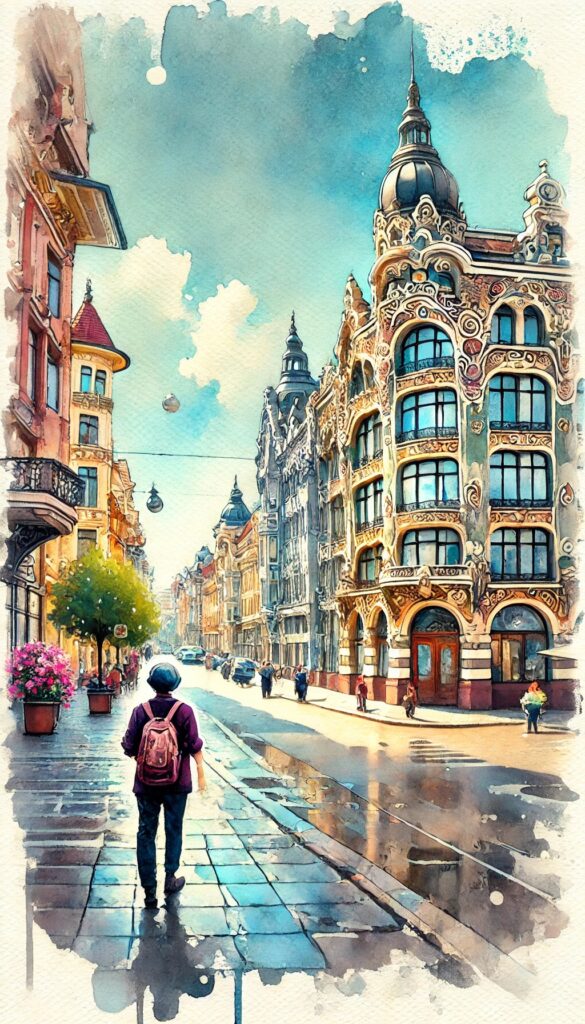ChatGPT:Riga, the capital city of Latvia, is a vibrant and historical city located on the Baltic Sea. Known for its stunning Art Nouveau architecture, Riga’s central district is a UNESCO World Heritage site. The city blends its rich history with a modern, cosmopolitan atmosphere. Key highlights include the medieval Old Town with its cobblestone streets, the iconic House of the Blackheads, and the towering St. Peter’s Church. Riga is also renowned for its lively cultural scene, offering numerous museums, galleries, and music festivals. The city is a key economic and cultural hub in the Baltic region, attracting tourists with its charming mix of the old and new.
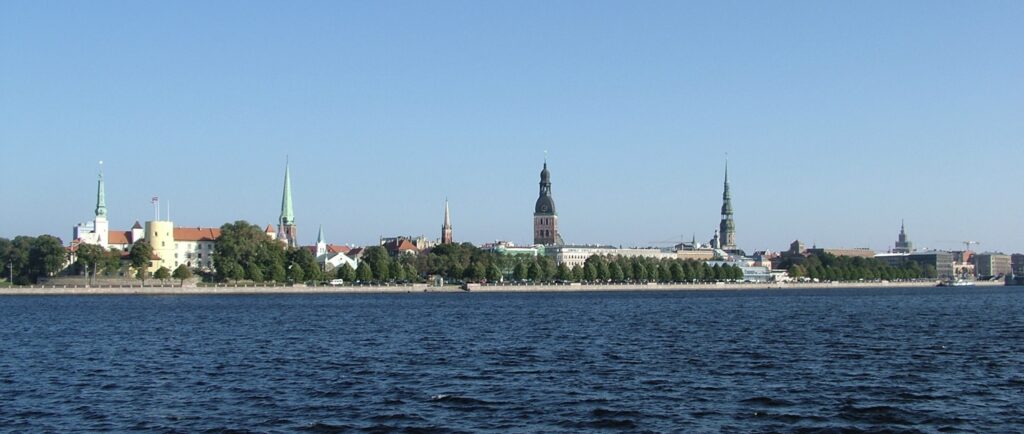
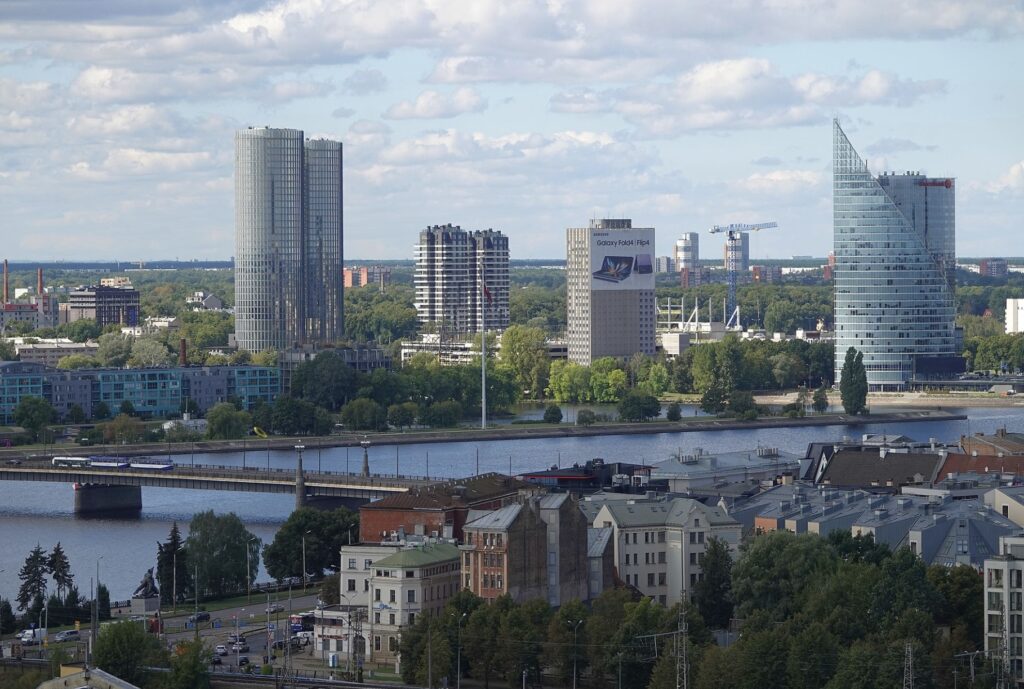
Riga, Latvia, has a rich and diverse history that dates back over 800 years. Here’s an overview of its origin, history, and development:
Origin
Riga was officially founded in 1201 by Bishop Albert of Bremen, who arrived with the aim of Christianizing the local Livonian pagans. The city quickly grew as a strategic trading post due to its location on the Daugava River, which provided access to the Baltic Sea and interior trade routes.
Early History
- Hanseatic League: In the 13th and 14th centuries, Riga became a key member of the Hanseatic League, a powerful commercial and defensive confederation of merchant guilds and market towns in Northwestern and Central Europe. This association brought wealth and development to the city through trade.
- Teutonic Order: The city was also influenced by the Teutonic Order, a medieval Catholic religious order of knights. The influence of German merchants and craftsmen during this period significantly shaped Riga’s culture and architecture.
Swedish and Polish Rule
- Polish-Lithuanian Commonwealth: In the late 16th century, Riga came under the control of the Polish-Lithuanian Commonwealth. During this time, it retained a degree of autonomy but was still a significant center of trade and culture.
- Swedish Empire: In the early 17th century, during the Polish-Swedish War, Riga was captured by the Swedish Empire. The city’s fortifications were strengthened, and it continued to flourish as an important Baltic port.
Russian Empire
- Annexation by Russia: In 1710, during the Great Northern War, Riga was annexed by the Russian Empire. Under Russian rule, the city grew rapidly, becoming an important industrial and commercial hub by the 19th century. Many of the city’s distinctive Art Nouveau buildings were constructed during this period.
20th Century and Independence
- World War I and Independence: Following World War I and the Russian Revolution, Latvia declared independence in 1918. Riga became the capital of the newly established Republic of Latvia.
- Soviet and Nazi Occupations: During World War II, Latvia was occupied first by Soviet forces, then by Nazi Germany, and again by the Soviets. Riga suffered significant damage and population loss during this tumultuous period.
- Soviet Era: Post-World War II, Riga was part of the Soviet Union until Latvia regained independence in 1991. During Soviet rule, Riga continued to develop industrially and culturally, although under strict state control.
Modern Development
Since regaining independence in 1991, Riga has emerged as a vibrant and modern European capital. It joined the European Union and NATO in 2004, which has brought economic growth and political stability. The city has invested in restoring its historical buildings and infrastructure, blending its rich heritage with modern amenities. Today, Riga is known for its thriving arts scene, diverse cultural heritage, and as a significant financial and business center in the Baltic region.
Riga is renowned for its Art Nouveau architecture rather than Art Deco, boasts one of the largest and most impressive collections of Art Nouveau buildings in the world. This style, characterized by ornate decorations, intricate facades, and flowing lines, was particularly popular in Riga in the late 19th and early 20th centuries.
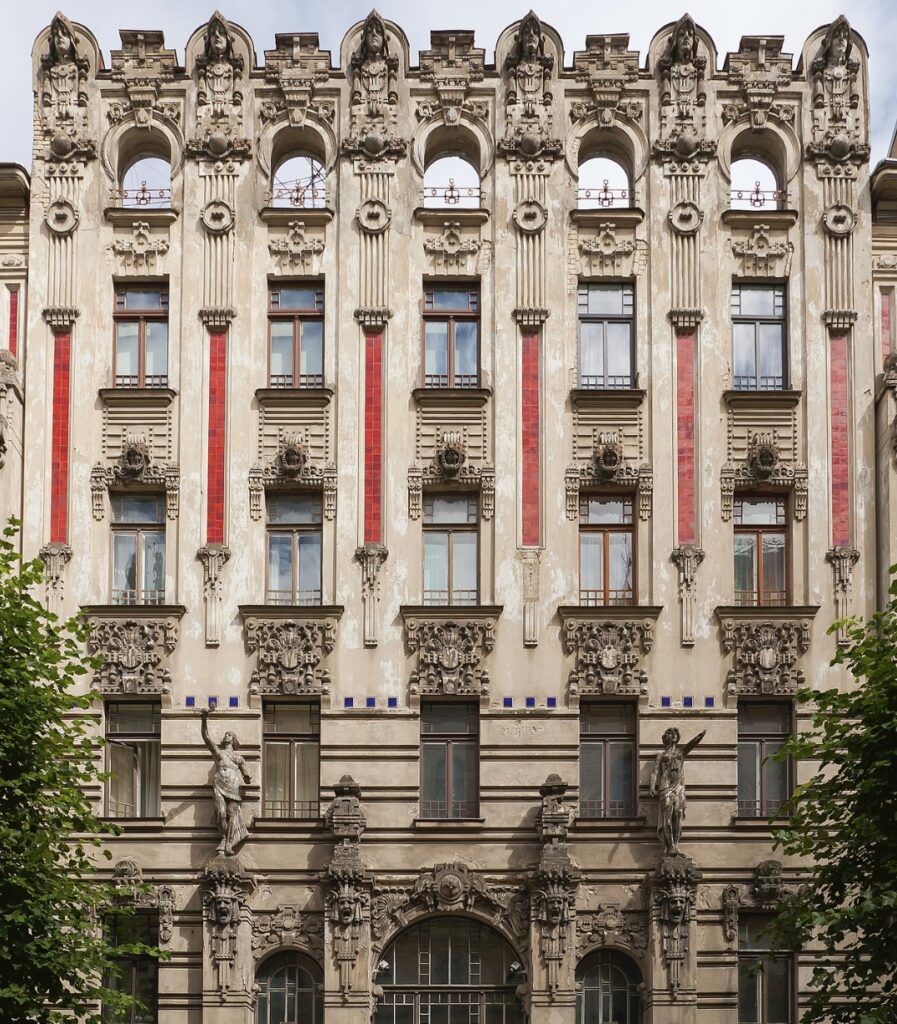
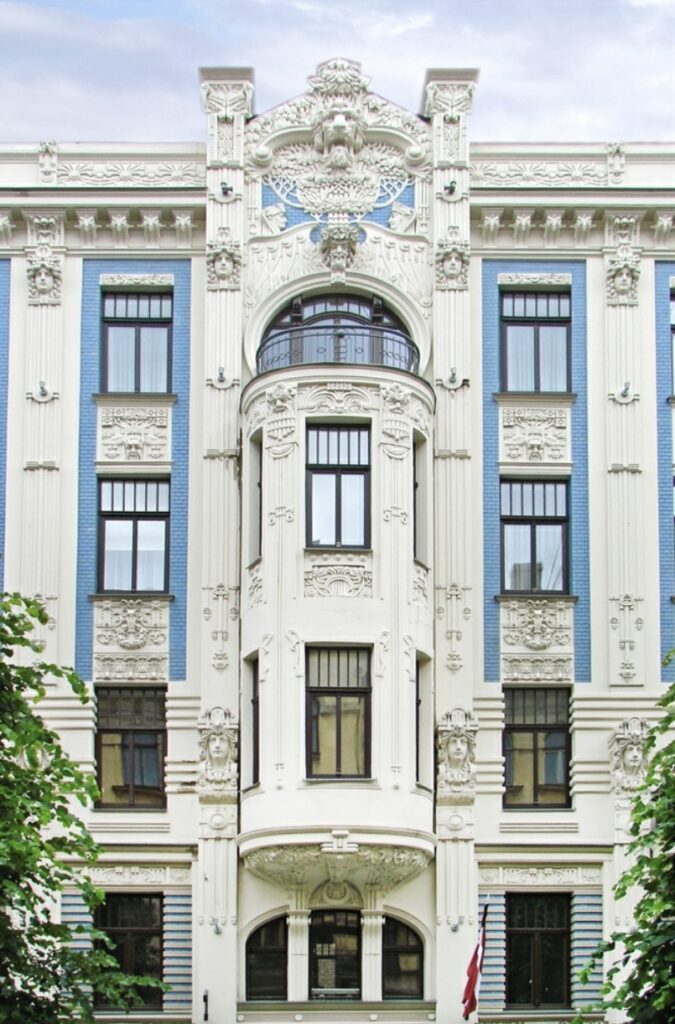
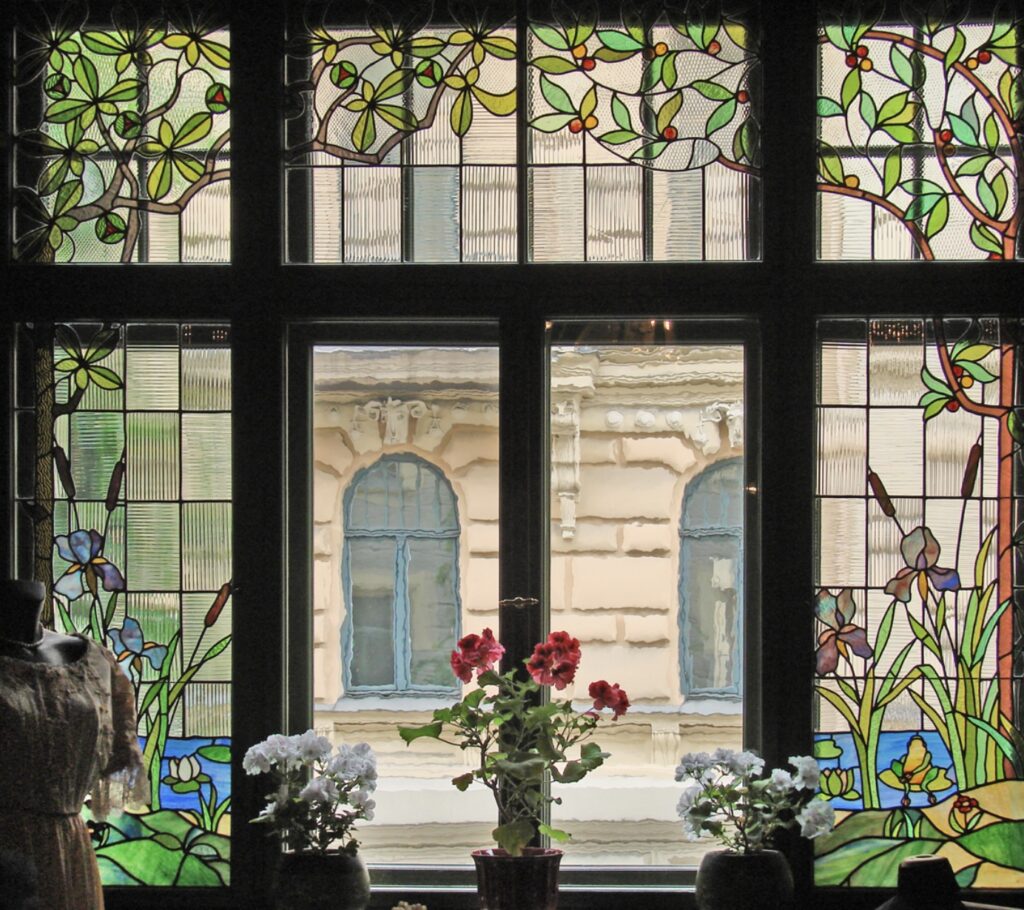
The city’s Alberta Street (Alberta iela) is particularly famous for its concentration of Art Nouveau buildings, designed by prominent architects such as Mikhail Eisenstein. The Art Nouveau style significantly shapes the architectural identity of Riga, making it a key attraction for visitors interested in architectural history and aesthetics.
Art Nouveau architecture, also known as Jugendstil, is a distinctive style that emerged in the late 19th and early 20th centuries. It is characterized by several key features:
Main Characteristics
- Organic Forms and Natural Motifs:
- Flowing Lines: Curved, sinuous lines that mimic the shapes found in nature, such as plants and flowers.
- Nature-Inspired Decorations: Elements like vines, leaves, flowers, and even animals are common motifs. These decorations can be found in ironwork, stone carvings, and decorative tiles.
- Ornamentation:
- Rich Decoration: Art Nouveau buildings often feature elaborate ornamentation, including intricate facades and detailed interior elements.
- Asymmetry: Designs frequently include asymmetrical shapes and forms, breaking away from the traditional symmetry of earlier architectural styles.
- Use of New Materials:
- Innovative Materials: Art Nouveau architects often experimented with new materials and construction techniques, including iron and glass, to create unique and innovative designs.
- Stained Glass: Stained glass windows with colorful and complex designs are common, often depicting natural scenes.
- Integration of Art and Architecture:
- Total Artwork (Gesamtkunstwerk): Art Nouveau seeks to integrate various forms of art into architecture, creating a cohesive and harmonious design. This can include everything from the building’s structure to its interior decor and furnishings.
- Handcrafted Elements: Emphasis on craftsmanship with hand-carved woodwork, custom metalwork, and unique glass designs.
- Elegant and Whimsical Aesthetic:
- Whiplash Curves: Characteristic whiplash or whiplike curves, which are dynamic and fluid, are often used in both structural elements and decorative details.
- Exotic and Fantasy Elements: Sometimes incorporating elements inspired by exotic cultures or fantasy, adding an element of the whimsical or surreal.
Examples
- Alberta iela in Riga: This street is renowned for its concentration of Art Nouveau buildings, with designs by architects like Mikhail Eisenstein.
- Casa Batlló in Barcelona: Designed by Antoni Gaudí, this building exemplifies the use of organic forms and vibrant colors in Art Nouveau architecture.
- Hotel Tassel in Brussels: Designed by Victor Horta, this building features characteristic flowing lines and intricate ironwork.
Art Nouveau architecture is celebrated for its beauty, creativity, and the way it brought art into everyday life, creating buildings that are not just functional but also visually captivating.
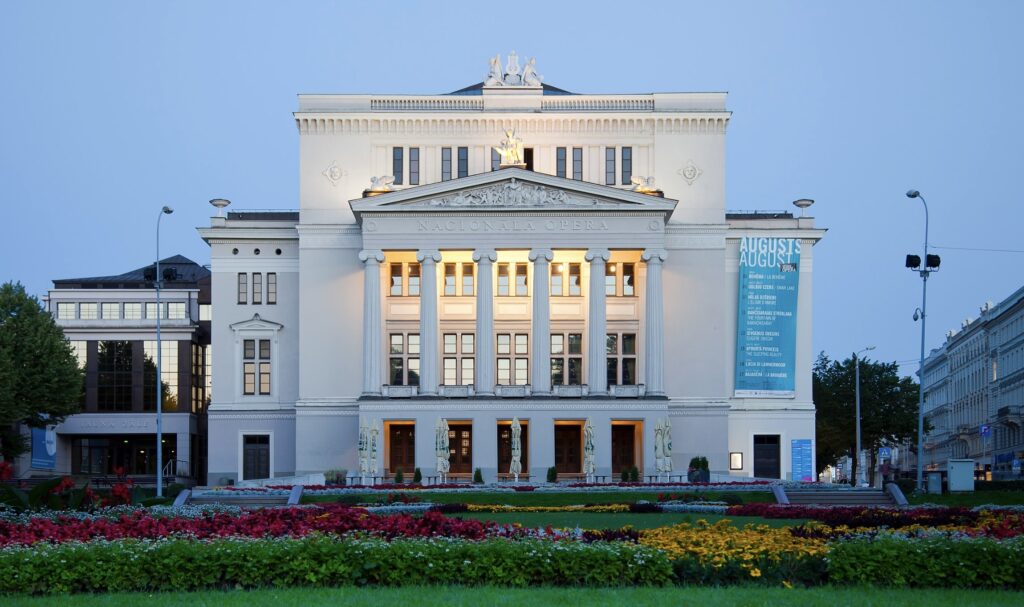
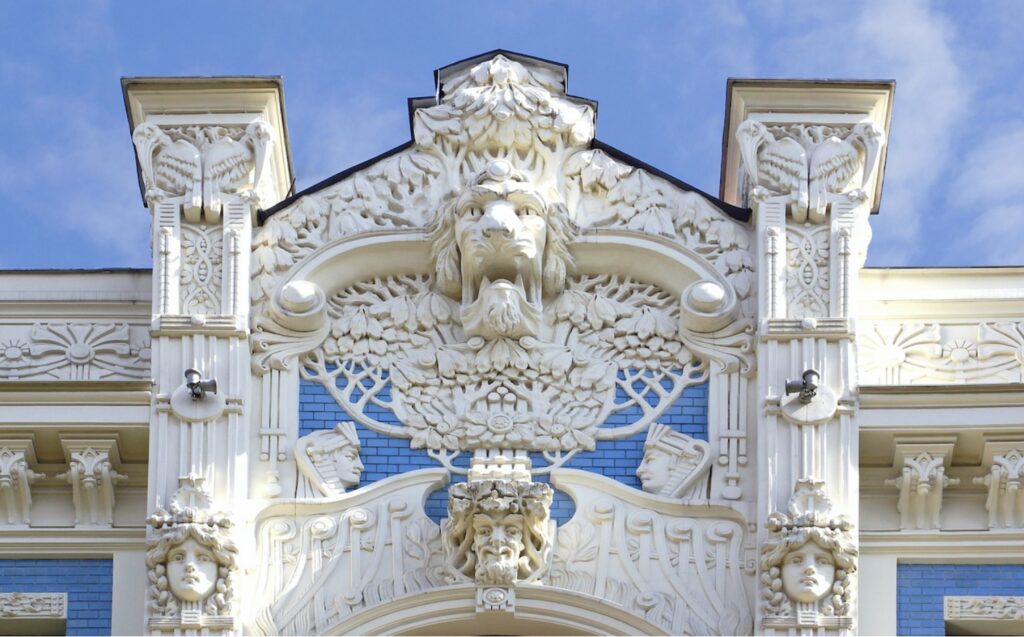
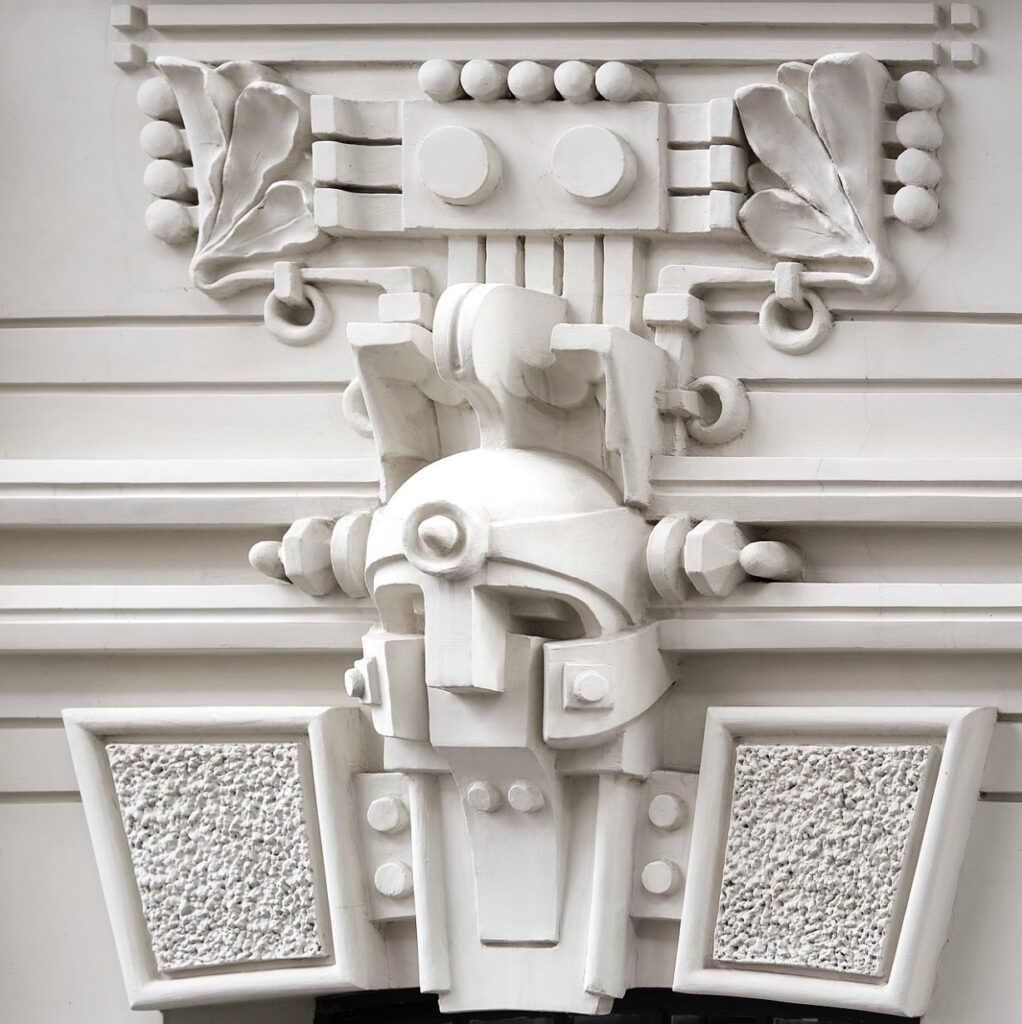
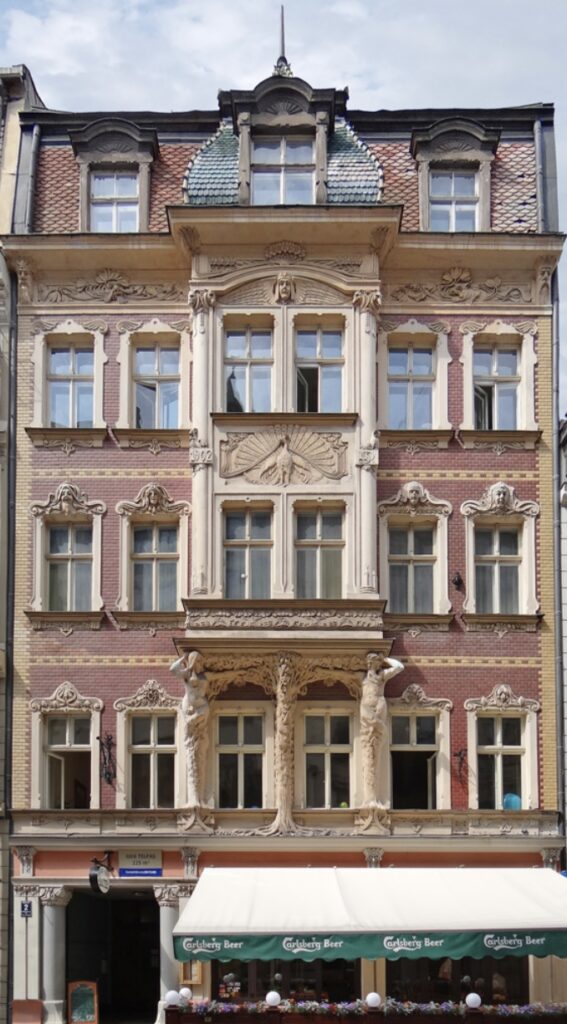
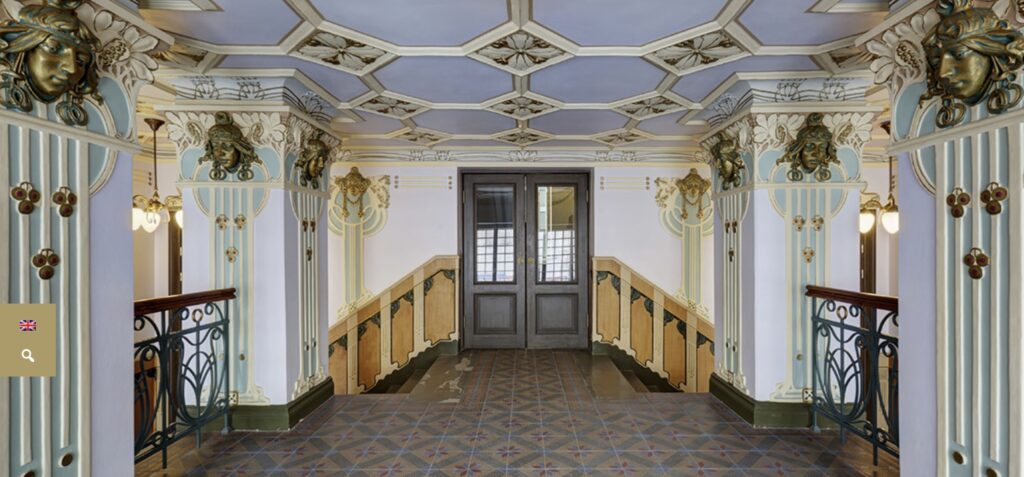
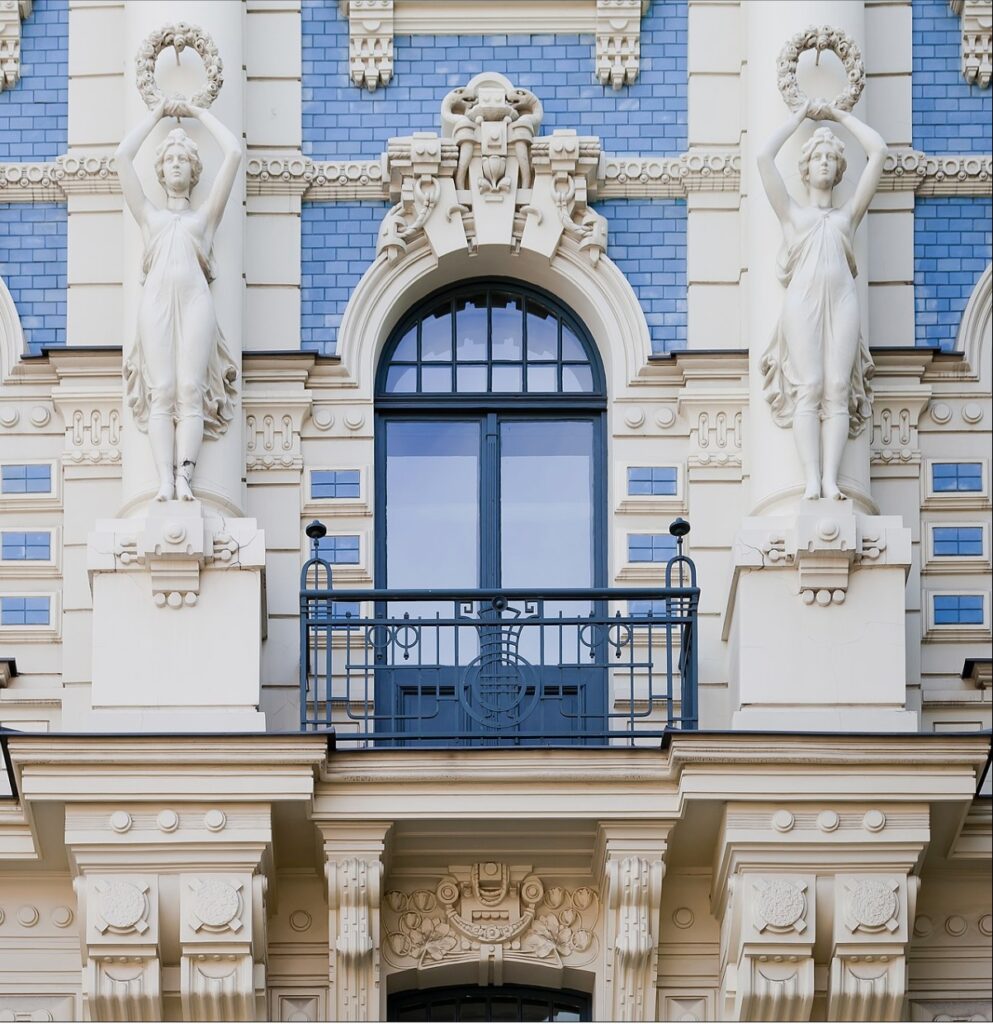
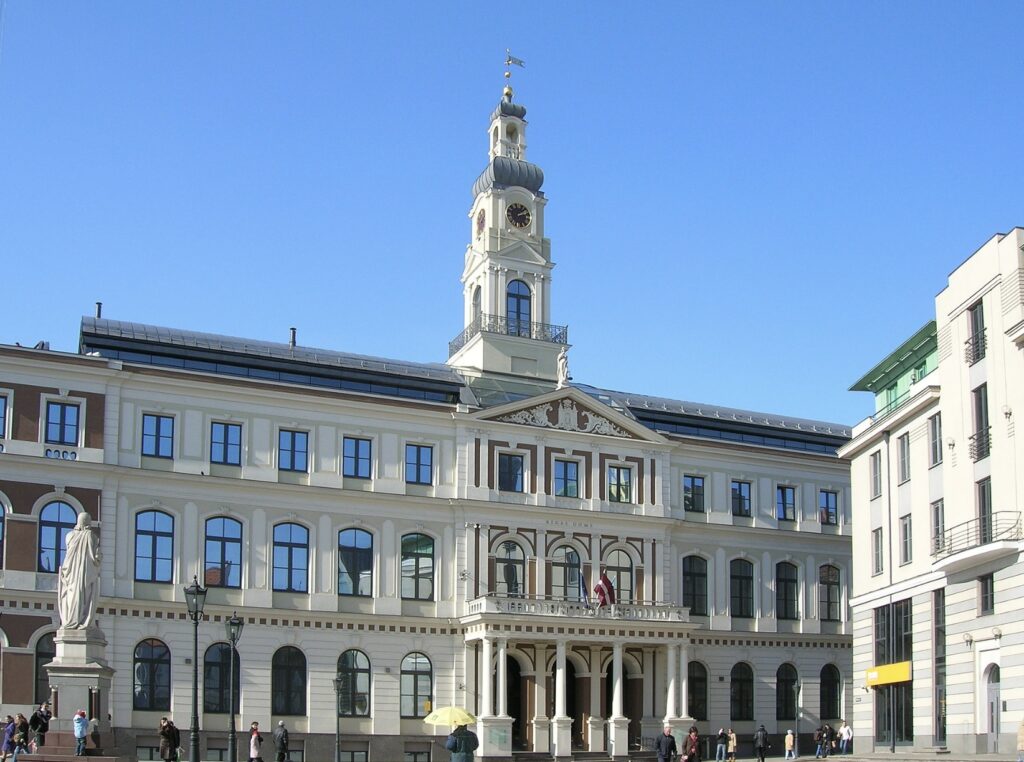
Riga is rich in historical monuments, interesting architecture, and tourist attractions. Here are some of the key highlights:
Historical Monuments
- Freedom Monument (Brīvības piemineklis): This iconic monument, unveiled in 1935, commemorates Latvian independence and is a symbol of national pride.
- House of the Blackheads: Originally built in the 14th century for the Brotherhood of Blackheads, a guild for unmarried merchants, shipowners, and foreigners. It was reconstructed after being destroyed in World War II.
- Riga Castle (Rīgas pils): A historic castle on the banks of the Daugava River, originally built in 1330. It now houses the offices of the Latvian president and several museums.
- St. Peter’s Church (Svētā Pētera baznīca): A Gothic church dating back to the 13th century, known for its tall spire that offers panoramic views of the city.
Interesting Architecture
- Art Nouveau District (Alberta iela and Elizabetes iela): Riga’s Art Nouveau district is famous for its ornate buildings designed by architects like Mikhail Eisenstein. It’s one of the largest collections of Art Nouveau architecture in the world.
- Riga Central Market (Centrāltirgus): Housed in old German Zeppelin hangars, this market is one of Europe’s largest and a UNESCO World Heritage site.
- Three Brothers (Trīs brāļi): A trio of historic houses on Maza Pils Street, showcasing different architectural styles from the 15th to the 17th centuries.
- Riga Cathedral (Rīgas Doms): Built in 1211, this is the largest medieval church in the Baltic states, known for its impressive organ and Romanesque architecture.
Tourist Attractions
- Old Town (Vecrīga): A UNESCO World Heritage site, Old Town is a charming area with cobblestone streets, medieval buildings, and vibrant squares. Key sites include Town Hall Square (Rātslaukums) and the Riga Dome Cathedral.
- Latvian National Museum of Art (Latvijas Nacionālais mākslas muzejs): The largest art museum in Latvia, featuring a vast collection of Latvian and international art.
- Latvian Ethnographic Open-Air Museum (Latvijas Etnogrāfiskais brīvdabas muzejs): An open-air museum showcasing traditional Latvian rural buildings and crafts.
- Riga Motor Museum (Rīgas Motormuzejs): A museum with a large collection of vintage cars, motorcycles, and other vehicles.
- Bastejkalna Park: A picturesque park in the city center, offering a tranquil escape with canals, bridges, and green spaces.
These sites reflect Riga’s rich history, architectural diversity, and cultural vibrancy, making it a fascinating destination for visitors.
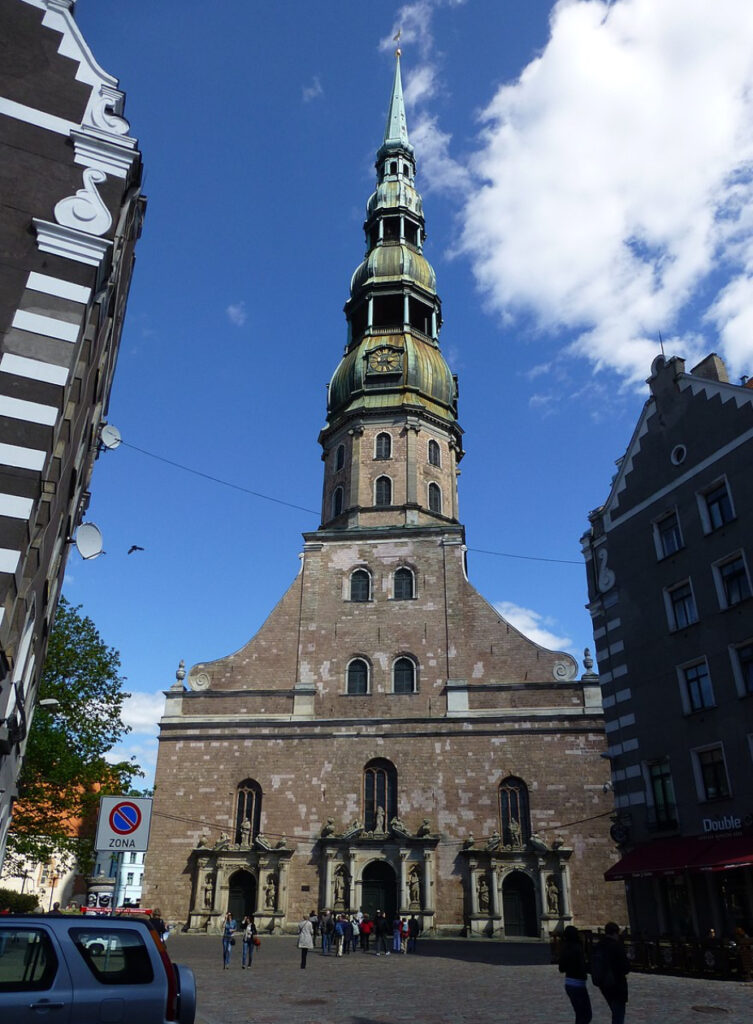
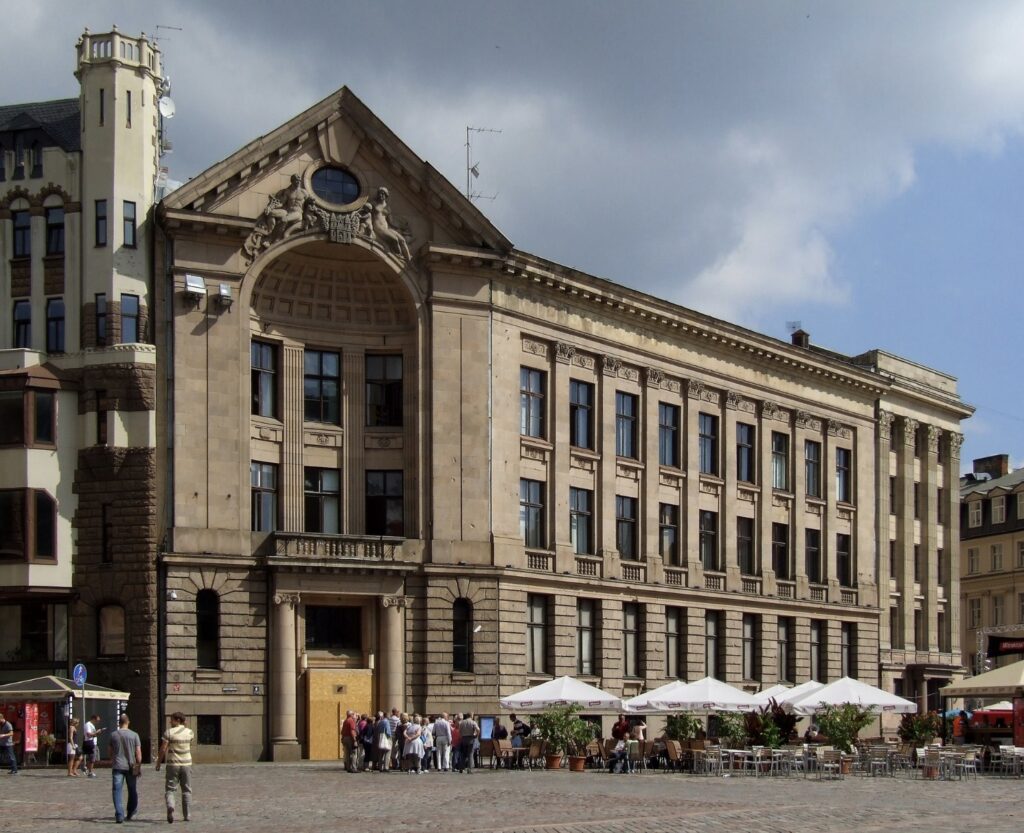
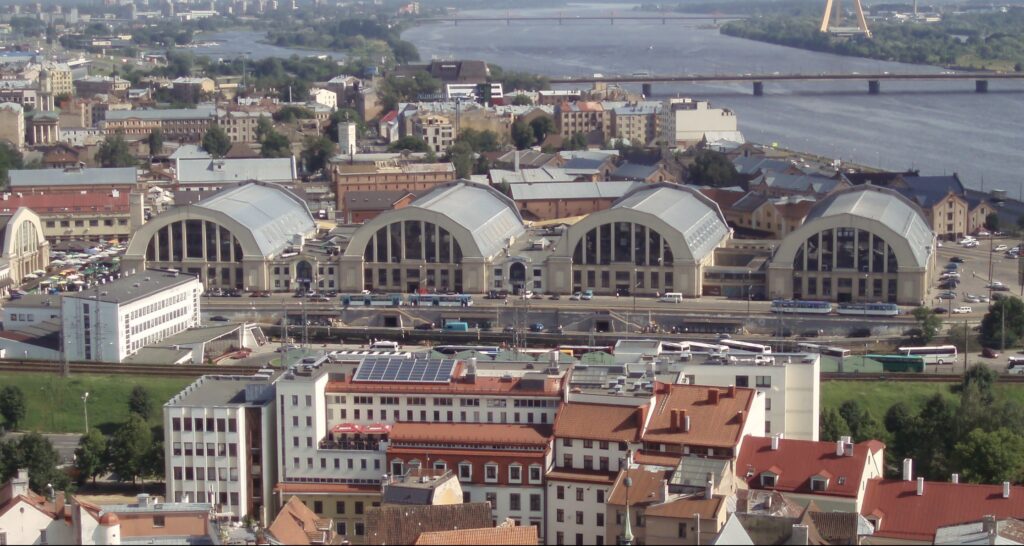
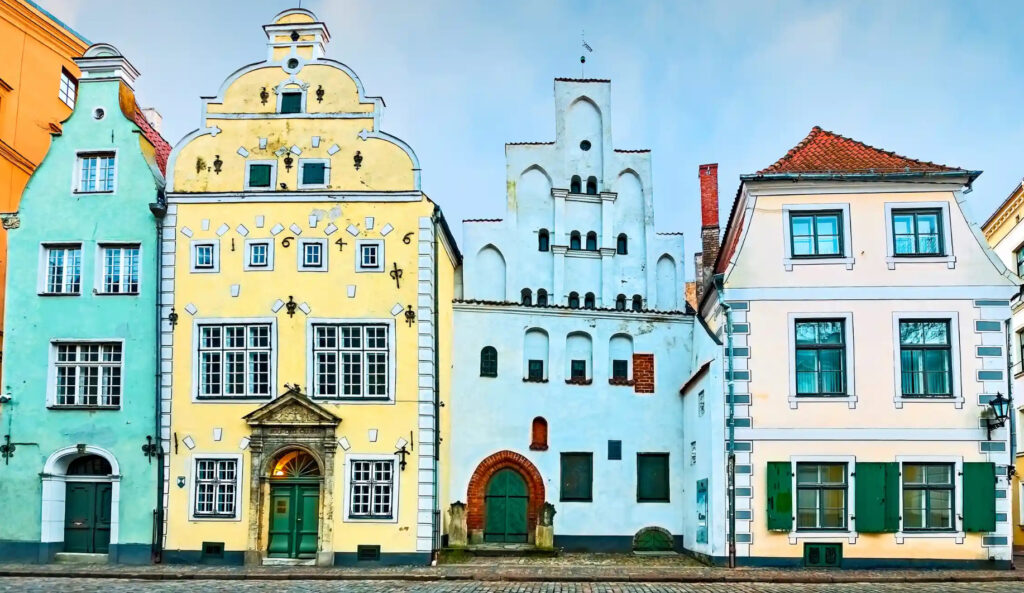
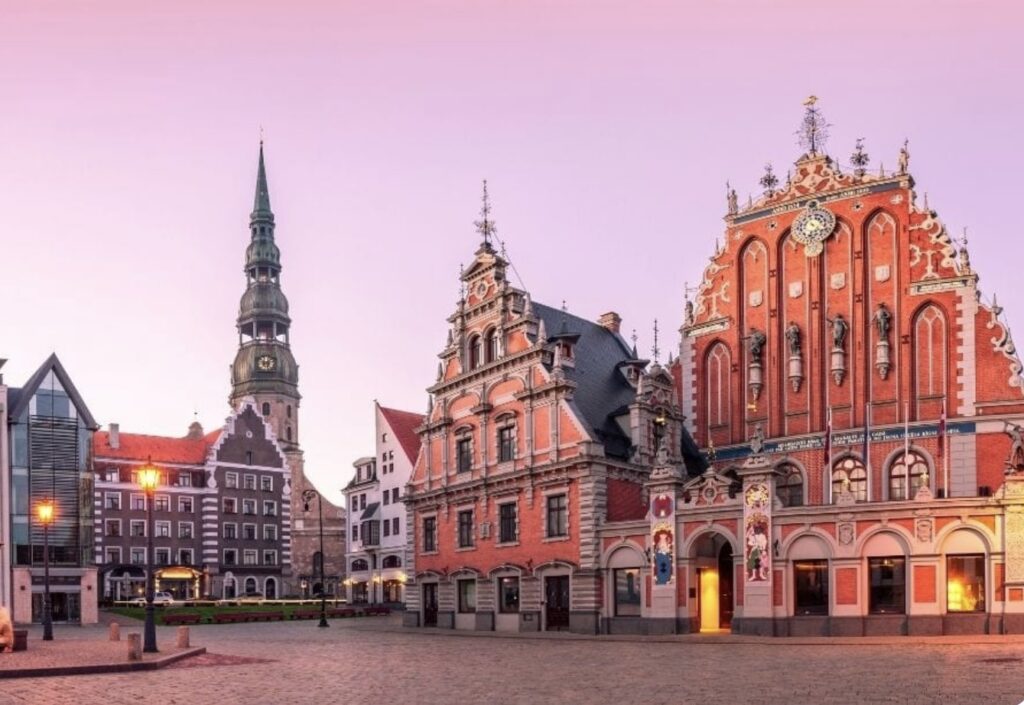
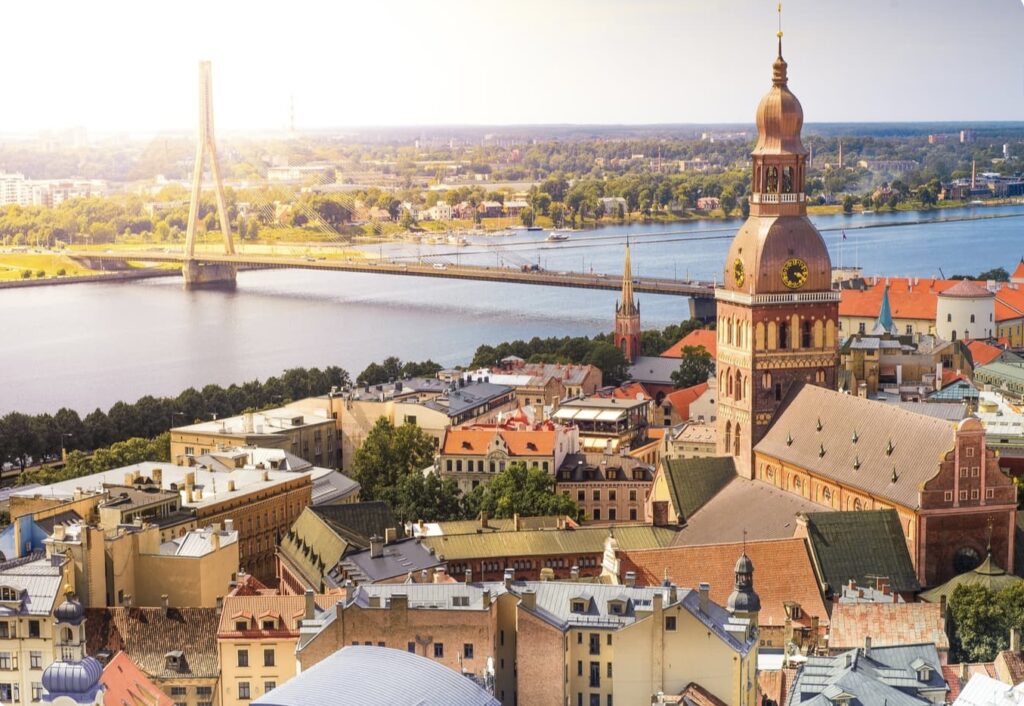
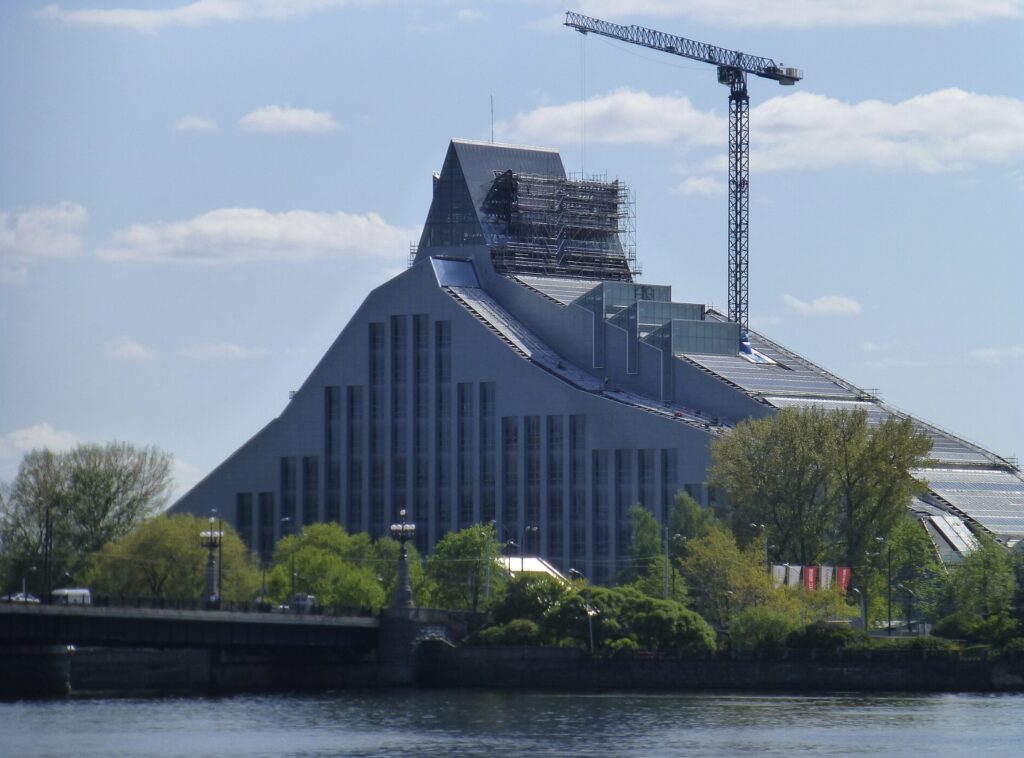
Here’s a suggested one-day itinerary for visiting the main attractions of Riga while incorporating local food specialties:
Morning
- Old Town Exploration
- Start at Riga Cathedral (Rīgas Doms): Visit the largest medieval church in the Baltic states and admire its Romanesque architecture.
- House of the Blackheads: Walk to this historic building in Town Hall Square (Rātslaukums) and take in its stunning facade.
- St. Peter’s Church (Svētā Pētera baznīca): Climb the spire for panoramic views of the city.
- Breakfast at Lido Alus Sēta
- Located in Old Town, this place offers traditional Latvian breakfast options like rye bread, smoked fish, and pastries.
Mid-Morning
- Freedom Monument (Brīvības piemineklis)
- Walk to this iconic monument and take in its significance to Latvian independence.
- Art Nouveau District (Alberta iela)
- Stroll through the Art Nouveau district to admire the intricate and ornate building designs. Make sure to visit the Art Nouveau Museum to see a restored apartment.
Lunch
- Riga Central Market (Centrāltirgus)
- Head to the market housed in old Zeppelin hangars. Try local specialties like piragi (bacon buns), grey peas with bacon, and smoked fish.
Afternoon
- Latvian National Museum of Art (Latvijas Nacionālais mākslas muzejs)
- Spend some time exploring the extensive collection of Latvian and international art.
- Bastejkalna Park
- Enjoy a leisurely walk in this picturesque park, which offers a peaceful escape with its canals, bridges, and green spaces.
- Three Brothers (Trīs brāļi)
- Visit these historic houses showcasing different architectural styles from the 15th to the 17th centuries.
Evening
- Dinner at Folkklubs Ala Pagrabs
- Enjoy a traditional Latvian dinner with dishes like pork ribs, potato pancakes, and sauerkraut. This cozy tavern often features live folk music, enhancing the cultural experience.
Late Evening
- Night Stroll in Old Town
- Finish your day with a leisurely night stroll through Old Town. The illuminated medieval buildings and cobblestone streets create a magical atmosphere.
This itinerary offers a blend of Riga’s historical, architectural, and cultural highlights while giving you a taste of local cuisine.
